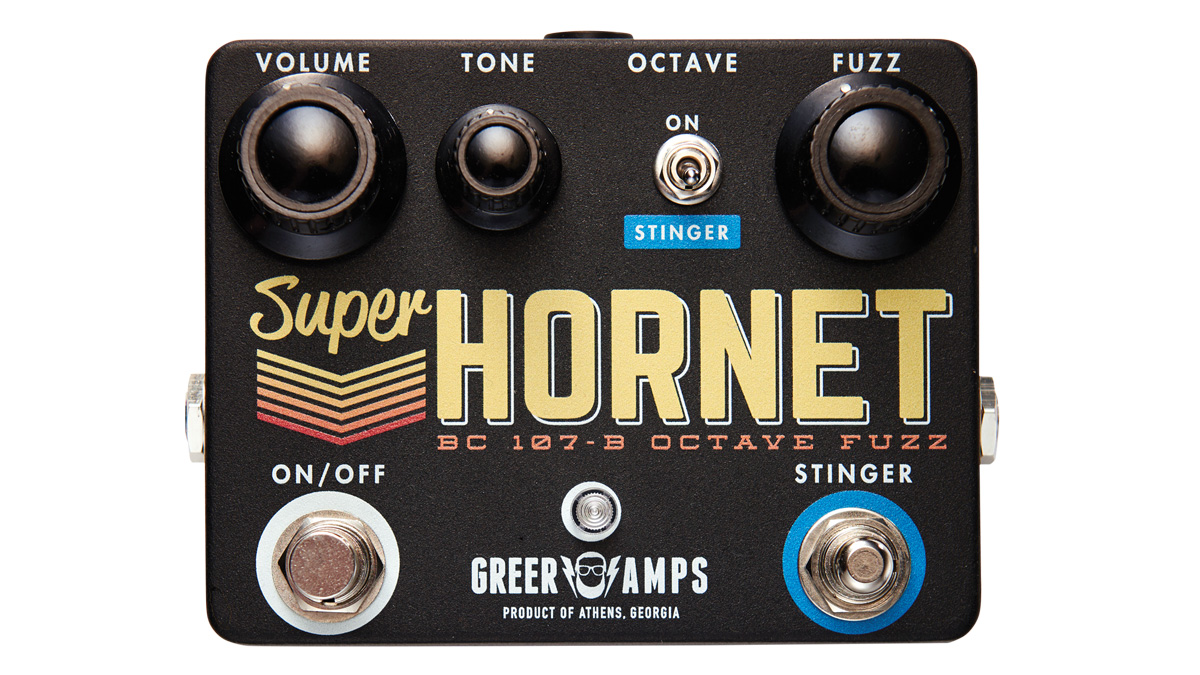MusicRadar Verdict
As cool as a fuzz can be.
Pros
- +
Switchable extra octave adds a whole new dimension.
Cons
- -
Very few.
MusicRadar's got your back
The Super Hornet is an octave fuzz based on a Foxx Tone Machine from the early 1970s, but with a few tweaks.
As with the original, you can have straight fuzz or fuzz with octave selected via a toggle switch, but the Super Hornet adds a brilliant feature: when the straight fuzz is active, you can temporarily add
in the octave for the odd note or passage via the ‘Stinger’ momentary footswitch. Without the octave added, the sound has a scooped-mid quality to it and goes from overdrive up to full fuzz with crisp clarity - a practical range aided by a Tone knob that can ramp up the upper mids/treble for an aggressive rasp.
If you’re looking for aggression, bring in that octave. It’s not the subtle harmonic enhancement of some octave pedals but instantly louder, layering in an element of high spluttery fuzz - proper nasty, but in a really good way, especially footswitched in for impact.
Want all the hottest music and gear news, reviews, deals, features and more, direct to your inbox? Sign up here.
Trevor Curwen has played guitar for several decades – he's also mimed it on the UK's Top of the Pops. Much of his working life, though, has been spent behind the mixing desk, during which time he has built up a solid collection of the guitars, amps and pedals needed to cover just about any studio session. He writes pedal reviews for Guitarist and has contributed to Total Guitar, MusicRadar and Future Music among others.

